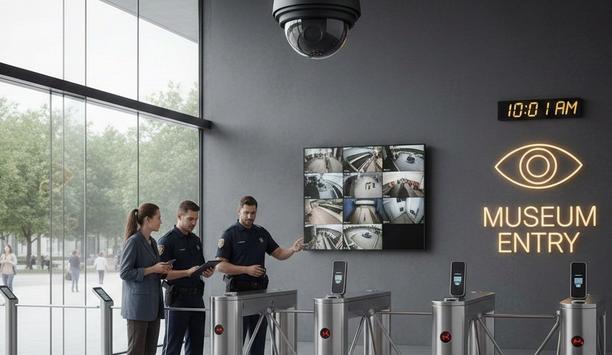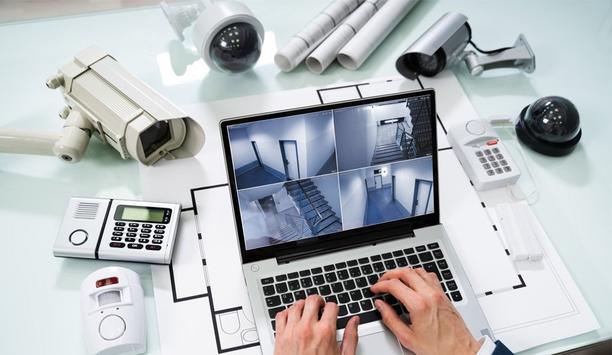Check Out Our Special Report On Casino Security
How Can Security Customers Go Beyond Price To Maximize Value?
- Prioritize security system features that enhance overall value, not just lower cost.
- Evaluate long-term benefits and reliability to maximize security system value beyond price.
- Optimize investments by balancing security system price with functionality and performance.
Editor Introduction
The price of a security system and the value it provides are two different things. For end users, the objective is to minimize price, while maximizing value. A system may both have a higher price and provide greater value, but not always. Because customers want to pay as little as they can, it is necessary to make a case that a system provides the best possible value, whatever the cost.
We asked this week’s Expert Panel Roundtable: How can customers go beyond price to maximize the ‘value’ of a security system?
The old saying ‘buy cheap, buy twice’, could have been written for the security industry. The primary issues of why a security system is needed and what are the end user's requirements should be addressed well, before a price is discussed. This can help to identify additional requirements, such as the need for a remotely accessible camera system or to recognize that an automated gate close to a busy road may require a higher-speed operator. If the simple questions have not been asked and the customer’s requirements have not been addressed, then the price is irrelevant. Getting expert advice, gained through experience from many different situations, can help prevent costly mistakes caused by buying on price alone.
Although we appreciate cost will always be a swing factor for specification, we can’t stress enough how important it is to look beyond price and consider other contributing factors. These include lifetime cost: how much comparable products cost upfront divided by the length of guarantee. If it doesn’t have a guarantee, you can be 99% certain that it will need replacing more often. Assess the quality of products and installation, too. Make sure to install the correct product for your requirements and avoid over- or under-specifying. The experience of the manufacturer you select is also crucial. Sustainability is at the forefront and businesses are now under more pressure to achieve real change. Consider where the materials are sourced from and what the company’s environmental credentials are. Finally, think about how poor security results in theft, terror attacks, or other forms of criminal activity. Security specification must be seen as an investment.
When it comes to a building’s security, product quality is paramount. By investing in durable solutions, decision makers can maximise the value of their systems, by optimizing their lifecycle, avoiding the false economy of lower quality hardware (and the costs associated with replacements). By lowering the need for replacements, robust security systems can reduce material consumption (both raw and packaging) and add value from a sustainability standpoint also, a critical consideration for many modern developments. Aside from financial value, decision makers must also review the value of their security systems from the perspective of the user. Is a cheaper solution hampering the usability and accessibility of your building? Or does your system provide merit to occupants, when installed? Finally, will your solution stand the test of time aesthetically? Modern security systems are dynamic and with so many considerations, decision makers can maximize value only by looking past the face value of a product.
One of the most popular and best value-add functions of a security system is the integration with Buildings Management Systems to reduce energy costs through the intelligent use of environmental and lighting systems. Lift (elevator) destination control systems have similar resource-saving benefits, but they also save people’s time by avoiding bottlenecks at busy periods. More recently, we have seen further specific examples, such as links from CCTV analytics (including footfall maps) to indicate busy areas or equipment within gyms, ensuring correct staff allocation times and the investment in popular equipment. We have also seen the use of these footfall systems in retail environments to judge customer reactions to digital signage promotions ‘on the fly’. In the future, I think we will see the provision of systems moving away from just targeting our customers’ Security Department into other areas, such as Finance and Marketing/Sales, where data from security systems can add additional value.
As the value of the data-driven insights provided by unified physical security systems is realized, security departments are moving away from being seen as a cost center to becoming active and central players in their organization’s digital transformation. In a recent Genetec survey of over 2,000 security professionals, more than two-thirds (69%) of respondents described physical security and related data as ‘mission-critical’, and over 46% reported using their security systems as a way to ‘improve overall business efficiency, productivity and asset optimization’. With a unified security system, forward-thinking organizations can use security data to gain actionable insights and identify patterns of behavior. This not only offers the potential for higher returns on investment, but can also help C-suite executives understand that a unified physical security system is much more than a risk mitigating tool. The right security system can enable new ways of working that go well beyond pure security and become what it was always meant to be: a strategic, enterprise-shaping technology.
In a fragmented industry, such as security and surveillance, integrators can differentiate themselves among competition through innovation, deploying flexible and scalable systems to offer more value to customers than merely price differentiation. Today, a security system, especially one that includes smart cameras as video sensors, can provide vast amounts of valuable data. For example, these systems can integrate with business and operational management systems, such as dashboard software, business intelligence tools, or building automation platforms to provide operational intelligence. An example of this is in manufacturing facilities, which can benefit from performance metrics, such as occupancy statistics. For end users, this provides additional value beyond security through actionable data insights on how to improve operations. Likewise, this gives integrators the option to offer more than just the security system and provides them with differentiation – something most integrators are looking for to protect margins. Additionally, using flexible systems can be expanded over time.
There are many ways to maximize the value of security systems, but it varies depending on the business. Adding video verification to alarms can be a great value-add for organizations plagued by false alarm fees and slow responses from law enforcement. In retail, maximizing value might mean integrating video with a point-of-sale solution to easily review POS exception events. For others, it might mean a virtual guard monitoring solution that also performs operational compliance checks throughout the day. As more businesses deploy AI-based security cameras, the value can shift into completely new areas. Operations departments can measure efficiency and productivity in new ways, while sales teams benefit from accurate people counting and sales conversion metrics. Shopper behavior insights from heat maps and dwell times can validate marketing campaigns or point to problems with store layouts. For many enterprises, maximizing value also means choosing a trusted partner that understands their unique requirements.
Editor Summary
When considering the concept of value, our Expert Panelists emphasized the importance of buying quality products and of evaluating total cost of ownership (TCO), rather than focusing just on price. Additional benefit can also be found in value-add functions related to integration, for example tying security into building and lighting systems. Data is an important component of value at enterprises today, and ‘security’ systems are providing valuable insights (based on data) into enterprise operations beyond the security department. As one panelist notes, the value a company can attain from a security system varies widely depending on the company.
- Related links
- Axis Communications Access control controllers
- Genetec Access control controllers
- TDSi Access control systems & kits
- TDSi Access control controllers
- Axis Communications IP cameras
- Genetec IP cameras
- TDSi IP cameras
- Axis Communications IP Dome cameras
- TDSi IP Dome cameras
- Biometric Access control systems & kits
- Proximity Access control systems & kits
- Standalone / Networked Access control systems & kits
- Network IP cameras
- Indoor/Outdoor IP Dome cameras
- Standalone/Networkable Access control controllers
- Related categories
- Access control controllers
- Access control systems & kits
- IP cameras
- IP Dome cameras
Expert commentary
Security beat
The Key To Unlocking K12 School Safety Grants
DownloadHoneywell GARD USB Threat Report 2024
DownloadPhysical Access Control
DownloadThe 2024 State Of Physical Access Trend Report
DownloadThe Security Challenges Of Data Centers
DownloadKentixONE – IoT Access And Monitoring For Data Centers
Climax Technology HSGW-Gen3 Modular Smart Security Gateway
Delta Scientific DSC50 ‘S’ Barrier: Portable, Crash-Rated Vehicle Mitigation Solution



























